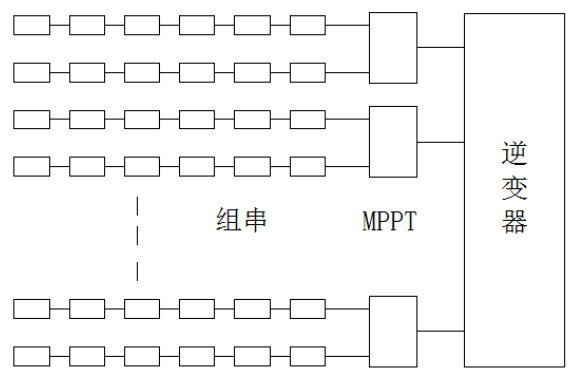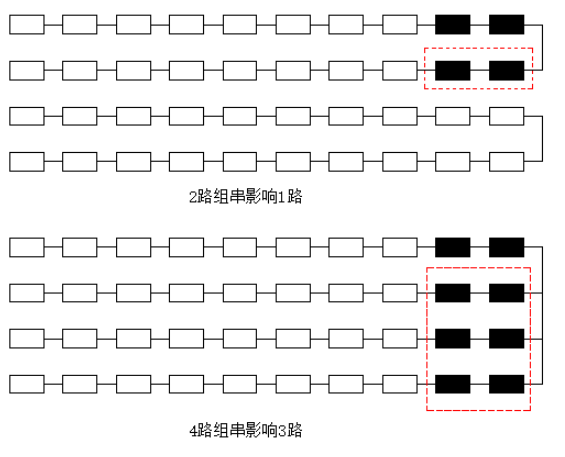How does PV inverter MPPT selection affect power generation?
How does PV inverter MPPT selection affect power generation?
At present, string inverters are different, and different manufacturers have different technical routes. Generally, households use single-phase inverters of less than 6 kW and inverters of three-phase and below 10 kW. Two-way MPPT is used, and each MPPT is equipped with one-way string. For small industrial and commercial projects, 20 kW to 40 kW inverters are generally used. 2 to 4 roads, each MPPT is equipped with 2 to 4 sets of strings; for large power stations, 60 kW to 80 kW high power string inverters are generally selected. The number of MPPTs is 1 to 6 and each MPPT is equipped with 2 12-way string.
Choosing different MPPT routes has a certain impact on the amount of power generated by the system. From the perspective of solving the mismatch problem, the fewer strings behind one MPPT are better; in terms of stability and efficiency, the more strings behind one MPPT, the better, because the more MPPT, the more system cost High, the worse the stability, the more the loss. In practical applications, it is necessary to combine the actual terrain and select the appropriate solution.

First, the advantages of MPPT less group string:
1) Less functional loss: There are many MPPT algorithms, such as interference observation method, incremental conductance method, conductance increment method, etc. No matter which algorithm is used, it is to continuously change the DC voltage to judge the intensity change of sunlight. Therefore, there will be errors. For example, when the voltage is actually at the optimal operating point, the inverter will try to change the voltage to determine whether it is the best working point. If there is more than one MPPT, there will be more loss.
2) Less measurement loss: When the MPPT is working, the inverter needs to measure current and voltage. In general, the larger the current, the greater the anti-interference ability and the less the error.
3) Low circuit loss: The MPPT power circuit has an inductor and a switching transistor, which will cause losses during operation. The more MPPT channels, the greater the loss. Generally speaking, the larger the current, the smaller the inductance and the less the loss.
Second, the advantages of MPPT multi-string:
1) Each MPPT circuit of the inverter is operated independently and does not interfere with each other. The strings can be of different models, different numbers, or different directions and tilt angles, so the number of strings is small and the system design flexibility is greater.
2) Reduce DC-side fuse failure: The most common fault of PV system is DC-side fault. One MPPT is configured with 1 to 2 strings. Even if a component is short-circuited, the total current will not exceed 15%, so no configuration is required. Fuse, fuse common failure mode is divided into over current fuse, aging fuse, over temperature fuse. Over-current fuse is a protective fuse that occurs when overload, short-circuit, etc. exceeds the rated condition; aging fuse refers to the fault that occurs in the long-term work, the same as its own aging, the intercepting ability is reduced, and the overcurrent is not generated. Fuse; the current of the fuse has a great relationship with the temperature. If the fuse is operated at a high temperature, the ability to cut off is reduced, and the possibility of faulty fuse is relatively large.
3) Accurate fault location: The inverter independently detects the voltage and current of each input, and can sample the string current and voltage in real time, and find problems such as line faults, component faults, and occlusions in time. Through the horizontal comparison of strings, comparison of meteorological conditions, comparison of historical data, etc., the detection accuracy is improved.
4) Matching power optimizer is more suitable: One of the solutions to eliminate the mismatch effect on the component side is to use the power optimizer. The photovoltaic optimizer can convert low current into high current according to the needs of the series circuit, and finally optimize each power. The output of the device is connected in series and connected to the inverter. Multiple strings are connected to the optimizer. According to the principle of the parallel circuit voltage, when a certain group string is shaded, the power is reduced. The optimizer changes the voltage. The voltage will decrease, which will also affect the voltage drop of the other MPPT circuits, resulting in power loss.

to sum up:
Combine the actual, scientific design. According to different terrains, component occlusion conditions, select inverters with different MPPT architectures, reduce power plant procurement costs and maintenance costs, and improve economic efficiency.
(1) In areas with no flat ground and good lighting conditions, it is recommended to select single-channel MPPT, single-stage inverter, which can improve system reliability and reduce system cost;
(2) Terrain complex mountain power stations, such as the front-runner bases and other large power stations, have inconsistent and partial occlusion phenomena, and different hills have different occlusion characteristics, resulting in component mismatch problems, and have to choose multiple MPPTs. Then each inverter with MPPT2 string input will be a better choice, no fusible consumables, high fault location accuracy, and simpler maintenance;
(3) The terrain is not very complicated. The hill power station and the roof power station have no component occlusion. It is recommended to select two inverters with MPPT multiple strings, which can balance string mismatch and high efficiency, and the design is more flexible.
for conceyance of petroleum, gas and conveyance of other fluid .
Standrd :GB/8163
ASTM a53, JIS G3452, JIS G3453, ASTM A106, DIN 1629.
Basic Info.
Model NO.
seamless
Tube For Conceyance Of petroleum and Fliud
pipe for conceyance of fluid and gas
Liaocheng Xinglong Seamless Tube Manufacturing Co., Ltd. , https://www.lcxlpipe.com